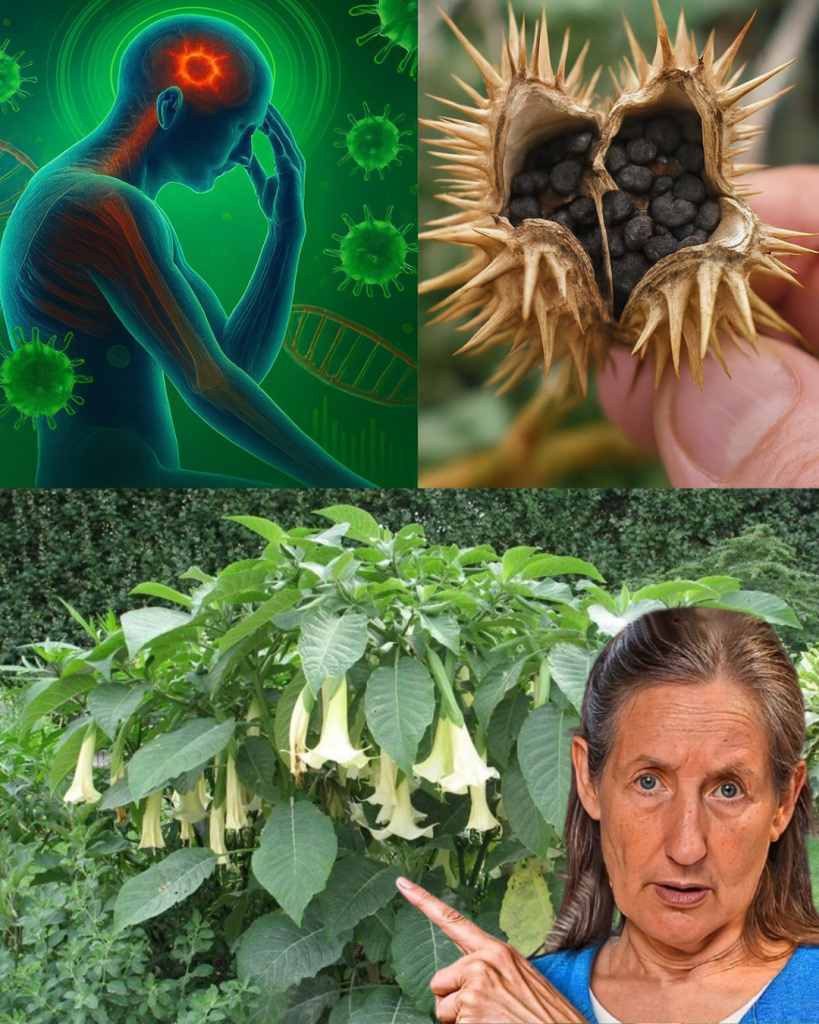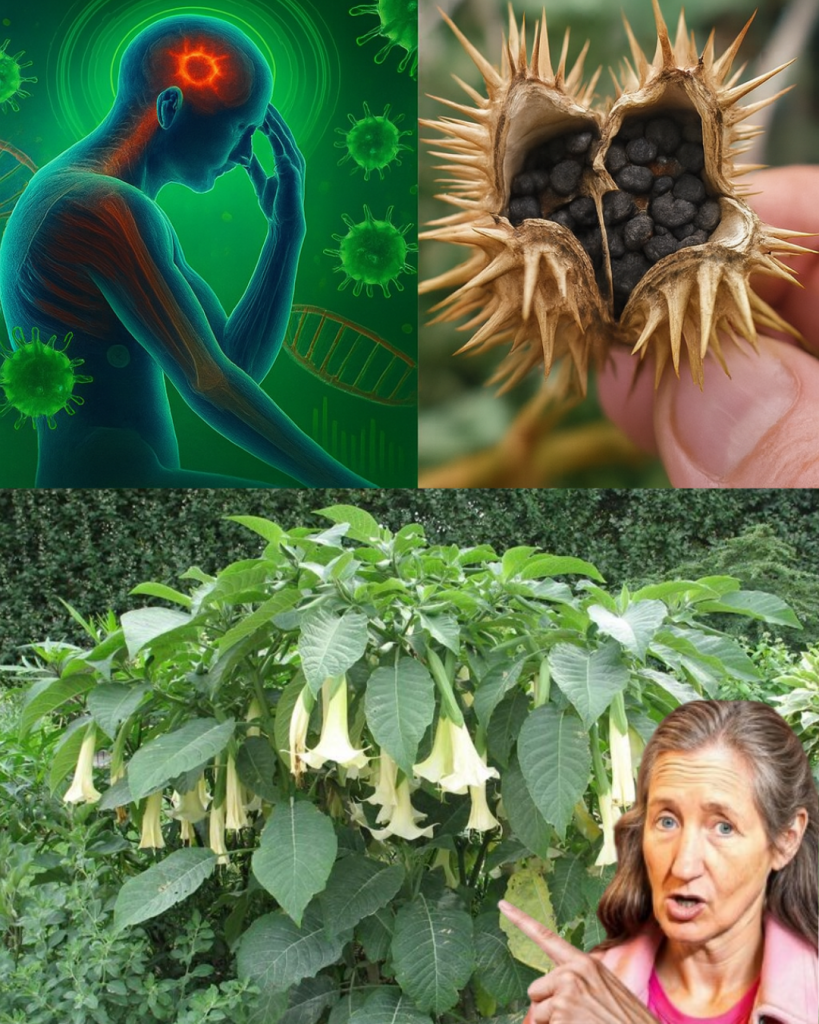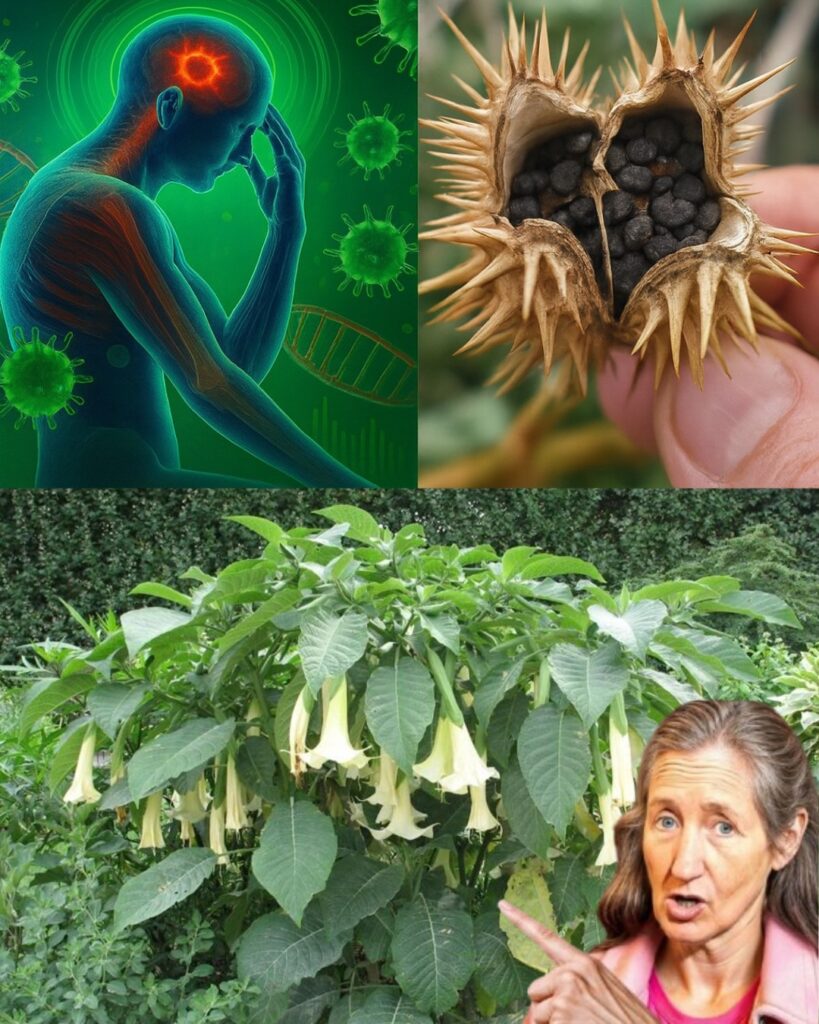🌿 The Devil’s Trumpet: Unraveling the Mystique of Datura Stramonium
Imagine stumbling upon a plant so captivating, its trumpet-shaped flowers glow under the moonlight, whispering tales of ancient rituals and forbidden knowledge. Yet, hidden within its beauty lies a dangerous secret—one that could send you spiraling into a world of hallucinations or worse. This is Datura stramonium, the enigmatic thorn apple, a plant that has seduced botanists, healers, and thrill-seekers for centuries. Its dual nature—both alluring and deadly—makes it a botanical paradox that demands your attention. Ready to dive into the mystery? Let’s explore the captivating world of Datura stramonium and uncover why this plant is as dangerous as it is mesmerizing.

🌱 A Botanical Enigma: What is Datura Stramonium?
Datura stramonium, often called jimsonweed, devil’s trumpet, or simply datura, belongs to the Solanaceae family, a group that includes familiar crops like tomatoes and potatoes, as well as the infamous deadly nightshade. Native to the Americas, this resilient plant has conquered the globe, thriving in disturbed soils—think roadsides, abandoned lots, and neglected pastures. Its ability to flourish in harsh conditions only adds to its mystique, as if it’s a wanderer with secrets to share.
This annual herbaceous plant can grow up to 1.5–2 meters tall, commanding attention with its bold presence. Its broad, dark green leaves, with their irregular lobes, give it a rugged charm. But it’s the flowers that steal the show—large, trumpet-shaped blooms, typically white or pale purple, that unfurl at night, releasing a sweet, intoxicating fragrance. The plant’s spiny, oval seed pods, often called thorn apples, split open when mature, scattering tiny black seeds that carry its legacy forward. Each feature of Datura stramonium seems designed to captivate, but beneath its beauty lies a potent danger.
⚗️ The Chemistry of Danger: Alkaloids That Bewitch
What makes Datura stramonium so formidable? The answer lies in its chemical makeup. The plant is loaded with powerful alkaloids—chemical compounds that can profoundly affect the human body and mind. The three primary culprits are:
- Atropine: A compound that disrupts the nervous system, causing effects like blurred vision and rapid heartbeat.
- Scopolamine: Known for inducing delirium and vivid hallucinations, often leaving users disoriented.
- Hyoscyamine: A sedative that can plunge you into a dreamlike state, sometimes with dangerous consequences.
These alkaloids target acetylcholine, a neurotransmitter critical for communication between nerves and muscles. By blocking its action, they unleash a cascade of effects, from mild sedation to intense hallucinations and, in severe cases, life-threatening symptoms. It’s no wonder Datura stramonium has been both revered and feared throughout history—its chemistry is a double-edged sword, capable of healing or harming depending on the dose and intent.
🕉️ A Plant Steeped in History and Mystique
Datura stramonium’s story is woven into the fabric of human culture, spanning continents and centuries. In ancient times, indigenous peoples of the Americas harnessed its psychoactive properties for spiritual rituals, using it to commune with the divine or enter trance-like states. Shamans and healers valued its ability to alter consciousness, but they approached it with reverence, knowing its dangers.
In medieval Europe, Datura stramonium found its way into the recipes of witches and alchemists. Its hallucinogenic effects were linked to tales of flying ointments and mystical visions, earning it a place in folklore as a plant of sorcery. Even today, some traditional medicine practices use minute, carefully controlled doses to treat ailments like asthma or muscle spasms, though such uses are rare due to the plant’s toxicity.
But Datura stramonium isn’t just a relic of the past. Its striking appearance makes it a favorite in ornamental gardens, where its night-blooming flowers add an air of mystery. Yet, this beauty comes with a warning—its allure has a dark side that demands respect.
⚠️ The Hidden Danger: Why Datura Stramonium is Not a Toy
While Datura stramonium may look like a gardener’s dream, it’s a nightmare for the unprepared. Every part of the plant—leaves, flowers, seeds, and roots—is packed with toxic alkaloids. Ingesting even a small amount can trigger a range of symptoms, from unsettling to deadly:
- Hallucinations: Vivid, often terrifying visions that blur the line between reality and fantasy.
- Delirium: A state of confusion that can leave you disconnected from your surroundings.
- Physical Symptoms: Rapid heartbeat, dry mouth, blurred vision, and difficulty swallowing.
- Severe Cases: Coma or death, especially with high doses or prolonged exposure.
The risks aren’t limited to ingestion. Handling the plant without gloves can cause skin irritation, and inhaling its pollen may trigger mild symptoms. Pets and children are particularly vulnerable, as their curiosity can lead to accidental exposure. Despite these dangers, some still seek out Datura stramonium for its hallucinogenic effects, a reckless choice that often ends in emergency rooms.
🏡 Gardening with Caution: Should You Grow Datura Stramonium?
For gardeners, Datura stramonium presents a tempting but risky proposition. Its dramatic flowers and unique seed pods can elevate any landscape, but its toxicity makes it a liability, especially in homes with children or pets. If you’re considering adding it to your garden, weigh the risks carefully and take precautions:
- Know the Plant: Familiarize yourself with Datura stramonium’s appearance to avoid mistaking it for a harmless lookalike.
- Handle with Care: Wear gloves when pruning or removing the plant to avoid skin contact.
- Secure the Area: Plant it in a location inaccessible to children and pets, and consider fencing it off.
- Dispose Safely: Seal clippings and seeds in a bag before discarding to prevent accidental exposure.
Better yet, consider safer alternatives. Plants like angel’s trumpet (Brugmansia) offer similar aesthetics without the extreme toxicity. If you suspect Datura stramonium is already growing in your yard, remove it promptly and consult a professional if needed.
🚨 Accidental Poisonings: A Growing Concern
Despite its dangers, Datura stramonium continues to cause accidental poisonings worldwide. Children are particularly at risk, as they may mistake the plant’s spiny seed pods for toys or its seeds for edible berries. Pets, too, can fall victim, chewing on leaves or flowers out of curiosity. Even adults aren’t immune—some unknowingly brew teas or consume seeds, unaware of the consequences.
Symptoms of Datura stramonium poisoning can appear within minutes and may last for hours or even days. If you suspect exposure, act fast:
- Seek Medical Help: Call emergency services or poison control immediately.
- Provide Details: Share information about the plant and the amount consumed, if known.
- Stay Calm: Quick action can make all the difference in preventing serious harm.
Education is the best defense. By learning to recognize Datura stramonium and spreading awareness, you can protect your community from its hidden dangers.
🌍 A Global Wanderer: Datura Stramonium’s Spread
Datura stramonium’s ability to thrive in diverse environments has made it a global phenomenon. From the Americas to Europe, Asia, and Africa, it has adapted to a range of climates and soils. Its preference for disturbed areas—think construction sites, overgrazed fields, or urban wastelands—makes it a common sight in places touched by human activity.
This adaptability is both a blessing and a curse. On one hand, it’s a testament to the plant’s resilience; on the other, it makes eradication challenging. Once established, Datura stramonium can spread rapidly, its seeds remaining viable in the soil for years. For farmers and land managers, controlling its growth is a constant battle, as it can outcompete crops and contaminate livestock feed.
🔬 A Plant for Science: Datura Stramonium in Research
Beyond its cultural and gardening implications, Datura stramonium is a subject of scientific intrigue. Researchers study its alkaloids for potential medical applications, such as developing new treatments for neurological disorders or pain management. However, these efforts are tempered by the plant’s toxicity, which complicates safe use.
Botanists also explore Datura stramonium’s genetics to understand its adaptability and invasiveness. By unraveling its secrets, scientists hope to develop strategies for managing its spread while harnessing its chemical properties for good. It’s a delicate balance—one that mirrors the plant’s own duality.

🌟 The Allure of the Forbidden: Why Datura Stramonium Fascinates Us
What is it about Datura stramonium that keeps us coming back? Perhaps it’s the thrill of danger, the allure of a plant that defies easy categorization. Its beauty draws us in, while its toxicity keeps us on edge. It’s a living paradox—a reminder that nature is never as simple as it seems.
For some, Datura stramonium is a symbol of rebellion, a plant that challenges norms and invites exploration. For others, it’s a cautionary tale, a warning to respect the power of the natural world. Whatever your perspective, one thing is clear: Datura stramonium is not a plant to be taken lightly.
🛡️ Final Thoughts: Respecting the Thorn Apple
Datura stramonium is a plant of contradictions—beautiful yet perilous, medicinal yet toxic, ancient yet ever-present. Its story is one of fascination and caution, a reminder that even the most captivating elements of nature can carry hidden risks. Whether you’re a gardener, a botanist, or simply a curious soul, approach Datura stramonium with respect and awareness.
If you encounter this plant, admire its beauty from a distance. If you choose to grow it, do so with vigilance. And if you suspect its presence in your life, act swiftly to protect yourself and those around you. Datura stramonium may be the devil’s trumpet, but with knowledge and care, you can keep its song from turning deadly.



